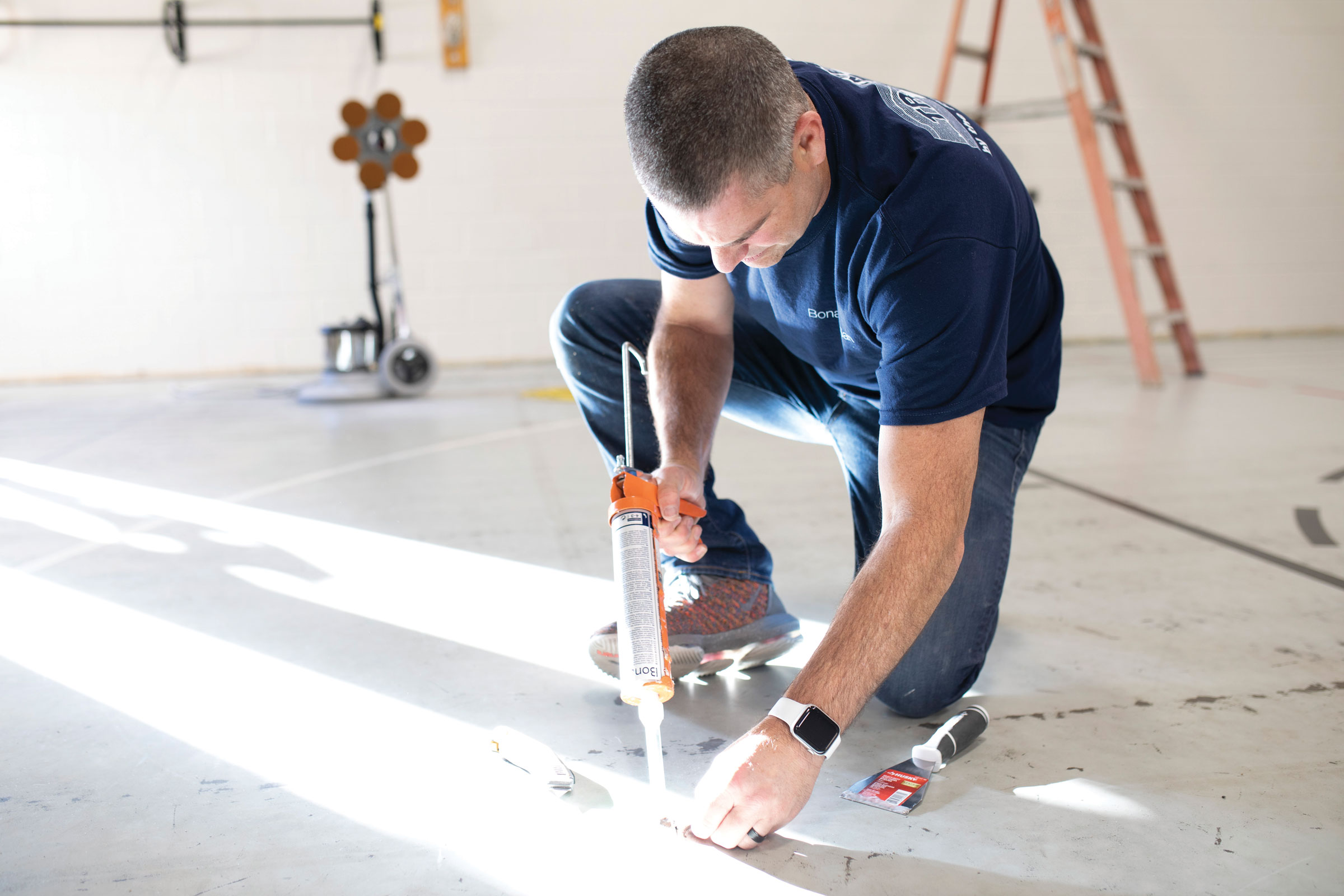Resilient flooring is a steadily growing market, yet over the years maintenance and renovation of these surfaces have seen little innovation and change. According to a study by The Freedonia Group, global demand for resilient flooring will grow to 3.9 billion square feet in 2022.
Resilient flooring, which is comprised of vinyl composition tile (VCT), sheet vinyl, luxury vinyl tile (LVT), linoleum, PVC, VAT, and rubber floors is a highly durable surface that can withstand a great deal of foot traffic and general use. A hospital operating room floor, for example, must be durable enough to sustain foot traffic, movement of large machinery or gurneys, and be slip-resistant when wet or dry. Resilient flooring is an ideal surface to navigate these challenges and the variety of issues present in other large facilities, such as commercial buildings or schools.
The Evolution of Resilient Floor Renovation
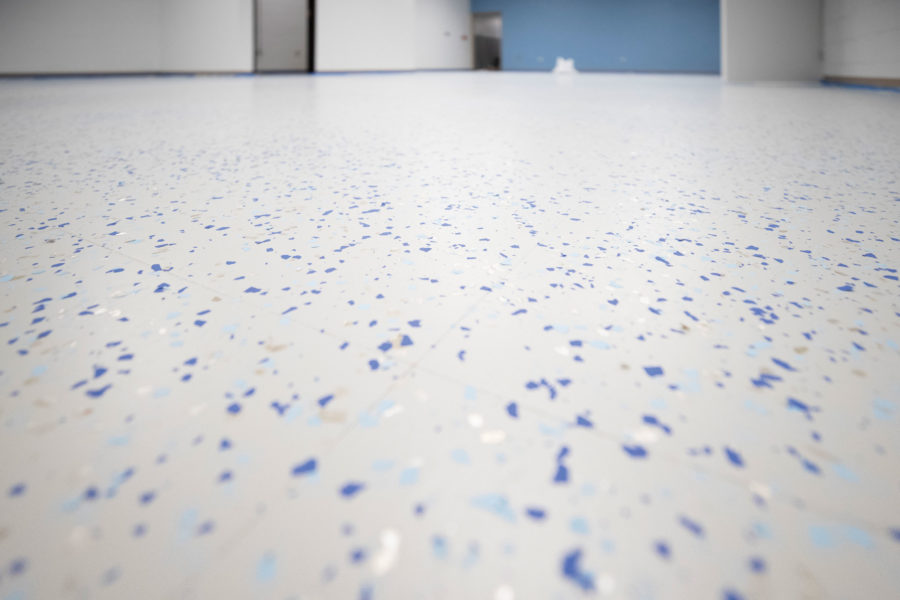
Photo courtesy of Bona
In years past refinishing a resilient floor wasn’t an option. The floor was stripped and polished multiple times until damage, tears, or dirt prevented it from maintaining the right look or performance. The floor was then torn up, typically tossed in landfill, and then the flooring surface was replaced with new material. Recently Bona unveiled the Bona Commercial System Resilient Floor Solution a system to renovate and refinish resilient floors with stunning outcomes.
The Bona Commercial System Resilient Floor Solution fully transforms the color and design of a resilient floor with the ability to repair torn and damaged areas. With a range of base colors, the system also offers color chips that can offer a more premium look. New chip options coming this fall will include a stone or terrazzo look for resilient floors. Additionally, the system can be typically completed in a matter of days, drastically reducing downtime, and allowing businesses to resume daily operations.
The floor renovation process begins with an onsite evaluation from Bona to train the project team on the renovation process. Once the floor is stripped and all polish is removed, repairs are made on any damaged areas. By using a specially formulated floor filler almost any hole, tear, or gouge can be fixed.
Once the floor repairs are complete, the team will abrade the floor to ensure an etched, even surface. Next, the team adds color, which can either match the existing floor color or change the color entirely. After the first layer of color, a second color coat can be added with the option of color chips for design. The surface is then sealed and finished with two coats of Bona Pure, a hard-elastic finish that serves as a long-term surface protection for heavily trafficked industrial and commercial floors. Bona Pure is a 2K waterborne, clear, and non-yellowing formula finish.
With proper training and quality products, the renovation process is simple and much easier on the budget than a complete flooring tear out and replacement. Refinishing is a quick process that produces beautiful outcomes and results in reduced costs for project labor and business downtime.
Following are a few examples of the time and cost savings available with the Bona Commercial System Resilient Floor Solution:
- A hospital realized 75% cost savings by renovating the floor in a labor and delivery room instead of demolishing it and starting from scratch. The latter would have been expensive and cost three days of downtime. Instead, using the Bona Commercial System, the floor was renovated in 18 hours.
- A retailer refinished 2,500 square feet of VCT flooring without disrupting regular business operations. With the Bona Commercial System, the floor was beautifully finished in five steps and five hours.
- A senior care facility refurbished 4,000 square feet of old, worn, and dated VCT flooring. Staff and residents regained full use of the new floor in just two days.
- A company brought new life to a 300-square-feet sheet vinyl floor space in four hours, with a wet abrade, new base color and chips, and two coats of finish.
Renovation for a More Sustainable World
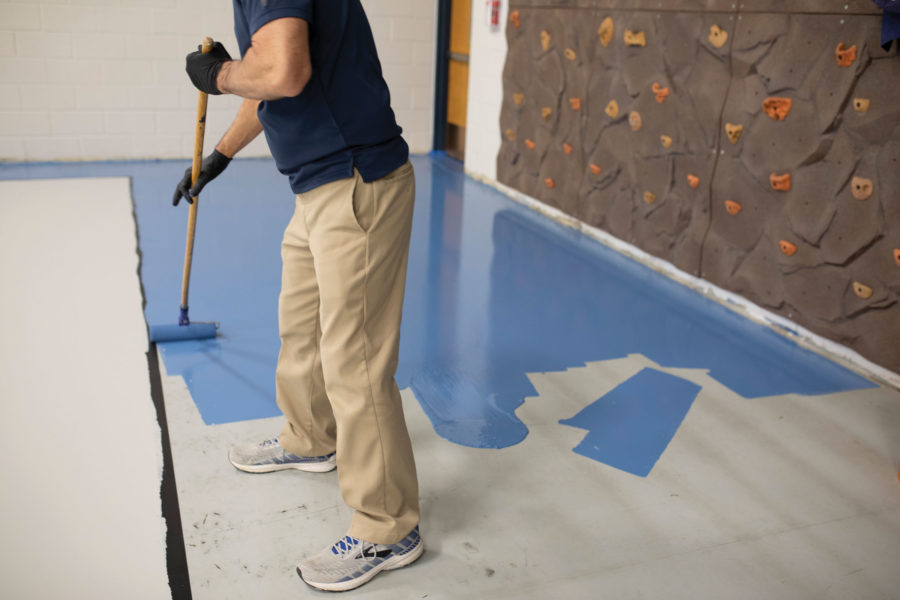
Photo courtesy of Bona
Every year, 27 million square feet of resilient and hardwood flooring is replaced in Swedish public and commercial buildings. That’s a lot of flooring in landfills—flooring that could easily be refinished to look and perform like new, at a fraction of the cost and time needed to replace it. To put it in perspective, 27 million square feet of flooring could cover more than 468 football fields.
A recent study and report conducted by IVL Swedish Environmental Research Institute confirms that refinishing resilient flooring is more sustainable for the environment than replacing the flooring surfaces. The report, conducted with input from Bona, found that refinishing resilient flooring surfaces:
- can offer up to 92% reduction in carbon footprint versus replacing; and
- results in at least 90% savings in resources, including transportation, electricity use, consumables, and materials.
The report also noted that technical knowledge of whether a floor can be successfully restored is key in completing the project efficiently, as well as protecting environmental resources and decreasing the project cost. Hence it’s critical that an expertly trained project team be on site for best results.
These findings, combined with the wide variety and quality of resilient flooring options available on the market today, mean facility managers, architects, and designers need to carefully specify and source the right materials with sustainability, efficiency, and budget in mind.
“This research study offers a holistic view and is tangible proof that refinishing a resilient floor surface is more sustainable than replacement all while improving the appearance of a floor,” said Björn Johansson, global environmental manager, Bona. “For more than 100 years Bona has developed products and systems that offer a more sustainable floor renovation solution. To have the support of this report validating the benefits of the Bona Commercial System is affirming.”
Resilient Floor Finishing Brings Unhealthy Floor Surfaces to Life
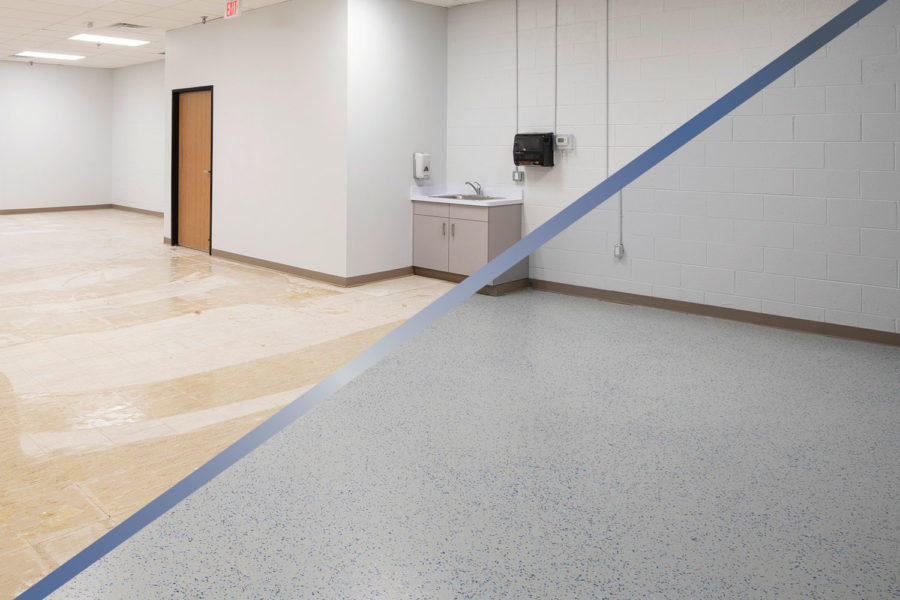
Photo courtesy of Bona
Frequent cleaning will achieve clean-looking, shiny floors; however, that doesn’t mean the floors are free of bacteria, which thrives in flooring with seams, grooves, and creases. A monolithic or a “flat” floor free of seams and creases will eliminate the environment for bacteria to grow. With the ongoing prevalence of Covid-19, hygienic practices that prevent the spread of bacteria and virus are more important than ever.
Bona recently commissioned a study, in conjunction with the IFR Institute in Germany, on the use of the Bona Commercial System on LVT flooring that is commonly used in hospitals and other hygiene-sensitive environments. The goal of the study was to prove that a monolithic surface can be created using Bona Pure, in accordance with Technical Rules for Biological Agents (TRBA) 250 standards for health and hygiene. TRBA 250 states that flooring must be:
- Water resistant
- Easy to clean
- Smooth and slip resistant
- Seamless without joints
- Finished with rounded corners and edges
- Sealed completely
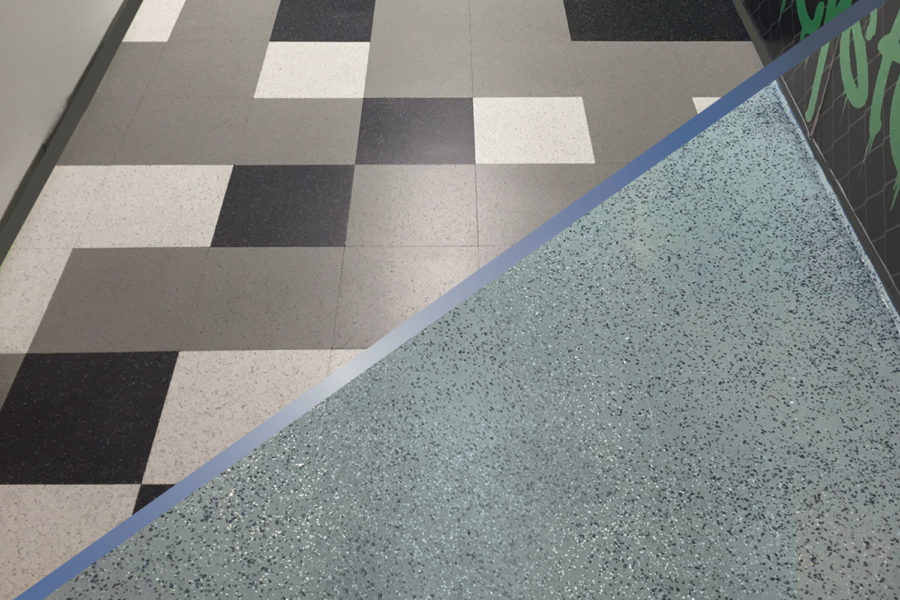
Photo courtesy of Bona
Bona Pure was developed to meet the TRBA 250 requirements and create a sealant that fills any fine cracks and scratches, including joints between LVT panels, eliminating the possibility of dirt, bacteria, and other micro-organisms building up on the flooring surface.
The test consisted of flooring divided into two sections, one treated with Bona Pure, and one left untreated. After two months, the untreated flooring surface showed high levels of contamination, while the section treated with Bona Pure showed little sign of impurities. Further testing showed the contamination penetrated through the planks of the untreated floor and moved into the subfloor.
To achieve a hygienic floor, follow a proper regimen of daily cleaning and periodic treatments, which may consist of reviving or recoating the flooring. Bona recommends following our resilient maintenance guidelines.
The Future of Resilient Floor Renovation
Maria Ahlm, author of the report at the IVL Swedish Environmental Institute said, “The norm today is new and fresh. Sales of new flooring material is supported by the linear business model we have in the construction industry today and refinishing is often perceived as more difficult.”
Yet we now know that refinishing a resilient floor is faster and easier than replacing the flooring surface and can offer beautiful results. The TRBA test also highlights the health and safety benefits of creating a flat, monolithic surface, particularly in medial buildings or facilities prone to bacteria or germs. The Bona Commercial System Resilient Floor Solution is truly a game changer for the industry. No other product or system offers the breadth of color and design options or the scalability to treat a wide variety of resilient floors. And best of all, the system is proven to save time, resources, and the environment.
Think your flooring is beyond repair? Think again. Regardless of the floor condition there’s no need to tear it up and purchase new materials. Instead renovate the floor for stunningly beautiful results, lower overall cost, and to avoid tossing that old flooring material into landfills.

